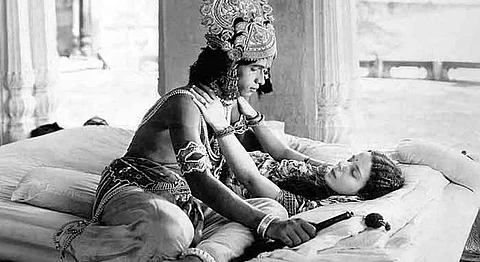
- HOMEGROWN WORLD
- #HGCREATORS
- #HGEXPLORE
- #HGVOICES
- #HGSHOP
- CAREERS
- ABOUT US
- CONTACT US

Classic Bollywood is famous for its style, beauty and incomparable glamour, but in the early days casting the now coveted role of ‘sultry heroine’ was a very different affair. The world of acting was considered a taboo for ‘decent’ women so many female leads were in fact de-bearded, dolled up men. This may have been a temporary fix but eventually audiences were sick of their ravishing leading ladies having a five o’ clock shadow. It was nothing short of a relief when women started trickling into the industry but even then it wasn’t from the more orthodox Hindu or Muslim population but from a small, almost forgotten community, the Jews.
These fiery women with their lighter skin and Western looks were visually perfect to appeal in Bollywood and they soon became the backbone of the industry’s elite. Most of these women came from either the Baghdadi Jewish or more rarely the Bene Israel community, both of which had strongholds far from the film cities of Mumbai or Kolkata.
Australian documentary filmmaker Danny Ben-Moshe came across this phenomenon when one of his students revealed that Sulochana, the legendary heroine of silent-era Bollywood was actually of Jewish descent and was born with the name, Ruby Meyers. As he started digging he realised how extensive the list really is; Pramila a.k.a Esther Abrahams, the first Miss India, her sister Romila (Sophie Abraham), stunning starlet Rose Ezra and even the unforgettable talents of Arati Devi, Firoza Begum and Nadira.
The face of Bollywood changed forever in 1931 with the release of its first ‘talkie’, Alam Ara (Light of the World); it was directed by Adeshir Irani but the screenplay and songs were created by Joseph Penkar David, a Bene-Israeli. With this departure from the silent era the Jewish actresses found their anglicised accents and poor Hindi meant that they no longer held the monopoly on leading roles. Slowly but surely, heroines became less cosmopolitan and more acceptable to Indian values.
Women were relegated into norms of womanhood no longer testing limits as ‘Westernised Vamps’ but demure reflections of the perfect wife and mother. Not only this, they began to segregate the former into an image of a ‘bad’ woman and the latter into the ideal heroine. The movement of these women out of Bollywood’s spotlight marked the end of an era where bold, educated and independent women were seen as the epitome of sexuality.
When we examine the length and breadth of the Indian movie industry today women like this are few and far between. Each time a strong female character takes centre stage, it’s usually to gyrate along with a salacious item number with lyrics that obliterate any shred of empowerment her previous actions had promised. In all fairness the last decade has seen a decided improvement in female character development but this is restricted in the most part to Indie and offbeat productions but mainstream cinema is left by the wayside.
While the Jewish actresses of yesteryear were undeniable sex symbols they also managed to exude a confidence and authority that won the respect of the popcorn masses. This balance between femininity and strength is something these women will always be revered for and their bravery to enter the forbidden world of cinema will never be forgotten.
